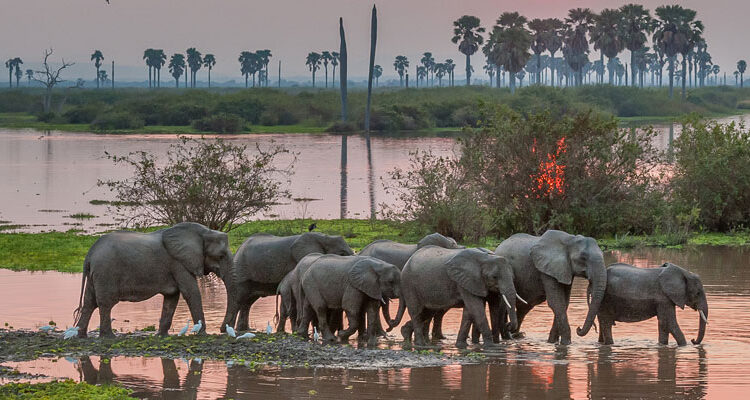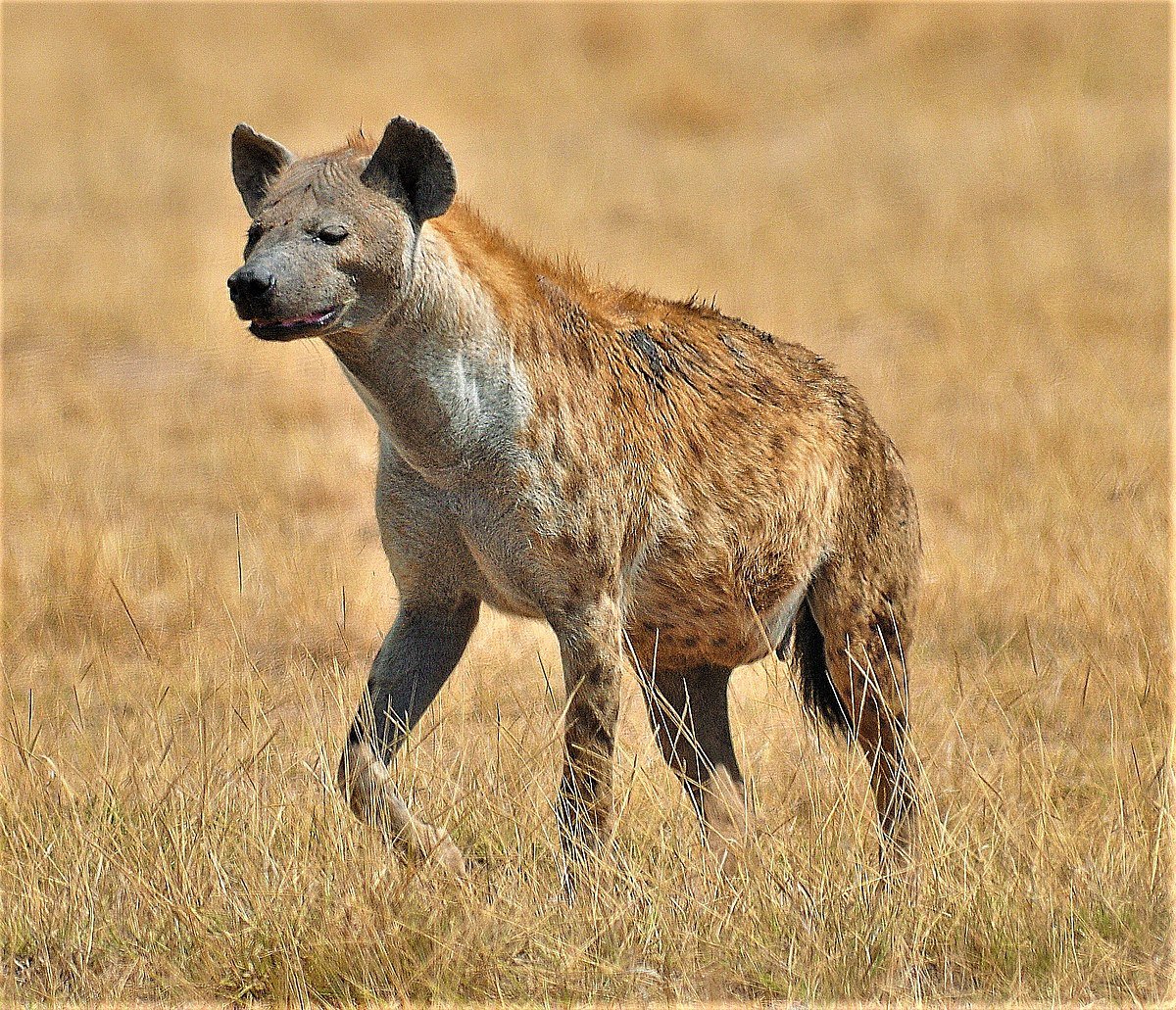Lukwika-Lumesule Game Reserve is located deep in the wild hinterlands to the southwest and west of Masasi. The reserve is a hidden sanctuary that shares a natural border with Mozambique’s Niassa Reserve, divided only by the winding Ruvuma River. The Reserve forms one of Africa’s largest and live transboundary ecosystems where large mammals migrate between the two countries until today. Among the migrating wildlife species through the popular Selous-Niassa Wildlife Corridor are the African Elephants, buffalo, zebra, and wildebeests.

Since its designated as a Game Reserve on November 20, 1995, through Government Notice No.7 of 1996. Lukwika-Lumesule Game Reserve has covered an impressive area of 444.2 square kilometers. Its is part of the expansive Selous–Niassa ecosystem in Southern Tanzania that stretches into the Northern Mozambique Niassa Province, creating one of the continent’s largest natural transboundary ecosystems encompassing approximately 154,000 square kilometers in total.
Geographically, the reserve lies between Longitude 380.00’ and 390.15’ East also Latitude 100.20’ and 110.25’ South. It shares its borders with the Niassa Game Reserve, with the Ruvuma River acting as the international demarcation between Tanzania and Mozambique. Surrounding these ecological treasures are Nile villages such as Masuguru, Lukwika, Chungu, Nanyumbu, Mpwahia, Chimika, Mburusa, Mpombe and Ndechela in Nanyumbu District.
Climate
The reserve experiences seasonal rainfall that generally last from November to late May. The mean annual rainfall range between 900mm to 1300mm, influenced by temperature, which varies from 18 degrees Celsius in the period of December to May and 32 degrees Celsius in July to November. The suitable time to visit the area is on the month of May to November before the heavy rains on the month of December to April, although the visitors welcome during heavy rains to experience and explore the beauty of nature.
Attraction found at Lukwika-Lumesule Game Reserve
wildlife diversity
Lukwika-Lumesule Game Reserve boasts a rich diversity of wildlife supporting both large and small animal populations. Visitors can expect to encounter iconic species such as leopards, lions, elephants, hippopotami, crocodiles, buffalo, Sable antelopes, and greater kudu, waterbuck and buffalo. The reserve is particularly appealing to those interested in walking safari and game viewing, offering an abundance of wildlife resources. Additionally, it is a home to reserve rhinoceroses, zebras, and wildebeests, contributing to its status as a premier wildlife destination.
The reserve also protects the habitat for various reptiles including pythons, tortoises, and different species of snakes, lizards and monitor lizards.

Birds
The corridor protects the waterbirds and other birdlife of the region. The presence of the river attracts waterfowl and waders, one of which is the migratory white stork. In total, there are about 370 birds in the area, some of which are migratory. Birdwatchers will be delighted by the wide array of bird species such as guinea fowls, francolins, quails, doves, ducks, geese, ground hornbills, nightjars, owls, and numerous eagles, all of which can be observed throughout the reserve.
Vegetation
The landscape of Lukwika-Lumesule is defined by its diverse vegetation, shaped by its unique soil types. The reserve features loam soils, particularly on the hillside, while sandy soils are found along the river valleys and fertile black cotton soils dominate the lower areas. These soil conditions foster the growth of lush Miombo woodland characterized by species such as Brachstegia sp, Dalbegia sp, Pterocapus, Afzelia sp, and Amarula sp. Other notable vegetation types present include grasslands, wooded grasslands and vibrant riverine ecosystems.
Drainage system
The reserve is crossbred by these seasonal rivers: the Lumesule River which flows from the western to the south, the Lukwika River flows from the north to south, and Lukwamba River which divides the Reserve into two distinct parts. these rivers are vital to water sources for the reserve’s wildlife and the surrounding communities, supplying essential hydration to residents of Mburusa, Chimika, Mpwahia, Lukwika and Masuguru Villages.
Lukwika-Lumesule Game Reserve offers an array of attractions and activities for visitors. Key highlights include Game viewing of large mammals in their natural habitat. Exploration of undulating rock formations and historical sites such as the Habiba Freedom Fighters’ hiding caves. Scenic vistas along the mighty Ruvuma River, feature rocky outcrops, waterfalls, sand dunes, and inviting beaches.
Unity Bridge at Mtambaswala
The Bridge which connects Tanzania and Mozambique forms an important connection of human corridor. The attractive statue of elephant tusks has been placed on the bridge to make the view of the bridge more beautiful.
Tourist activities
Most part of the reserve is dominated by Miombo woodland which is favorable for hunting tourism, but a number of photographic activities are conducted including;
Game drives
Experience the magic of game drives in Lukwika-Lumesule Game Reserve. Where visitors on a Tanzania wildlife safari in a safari’s vehicles will have the opportunity to encounter aversity of a variety that roam in the reserve. Such wildlife encountered here includes the African Elephants, Greater kudu, and Sable antelope among these not easily seen in other Protected Areas in Africa.
Walking safaris
Walking safaris is another exciting activity to do while on a Tanzania wildlife safari in Lukwika-Lumesule Game Reserve. While on your walking safaris, you will have the chance to embark on a thrilling safari through the reserve’s plain and woodlands on foot. This activity is guided by an armed tour guide. This immersive experience allows you to connect with nature on foot, observing wildlife up close and gaining valuable insights into the unique ecosystem of the reserve.
Bird watching
For bird lovers, the reserve is home to over 300 species of birds offering an exceptional birdwatching experience. Visistors can marvel at a rich diversity of birdlife, enjoying the majestic sights and melodious calls of various species. During your birdwatching safaris, your will have the chance to spot birds such as guinea fowls, francolins, quails, doves, ducks, geese, ground hornbills, nightjars, owls, and numerous eagles among others.
Camping
Lukwika-Lumesule provides picturesque camping sites for those seeking a closer connection to nature. Enjoy stunning views and the soothing sounds of the wilderness as you set up camp under the stars. Whether in a tented or simply enjoying the outdoor, this experience is perfect for adventurous travelers.
Beach tourism
Beach tourism is another exciting and thrilling activity to do while on a safari in Lukwika-Lumesule, this activity offers visitors with the chance to explore the sandy and rocky beaches along the Ruvuma River for a unique beach tourism experience. Visitors can relax by the river, enjoying the tranquil surroundings while engaging in activities such as fishing and leisurely walks. The stunning natural setting offers a calming retreat with the reserve.
The best time to visit
The reserve experiences seasonal rainfall from November to late May. With annual rainfall ranging from 900mm to 1300mm. The ideal time to visit is from May to November, just before the heavy rains begin in December. However, visitors are welcome year-round to discover the captivating beauty of nature in all its forms.
Getting there
Lukwika-Lumesule Game Reserve can be accessed via a 69 km road journey south of Mangaka in Nanyumbu District or by chartered flights landing at the Masasi airstrip, followed by a drive to the reserve. Visitors opting for a chartered flight may also land at Mtemaupinde Airstrip, situated within the reserve itself.
Accommodations
The towns of Mangaka and Masasi offer a wide range of accommodation facilities catering to visitors with different budgets. Inside the reserve, visitors are allowed to camp within the reserve, but only when it’s open to the public. Campers have to be completely self-sufficient. There are numerous places for camping especially at Dume and Mtondo area alongside the Ruvuma River depending on the preference of the visitors.


